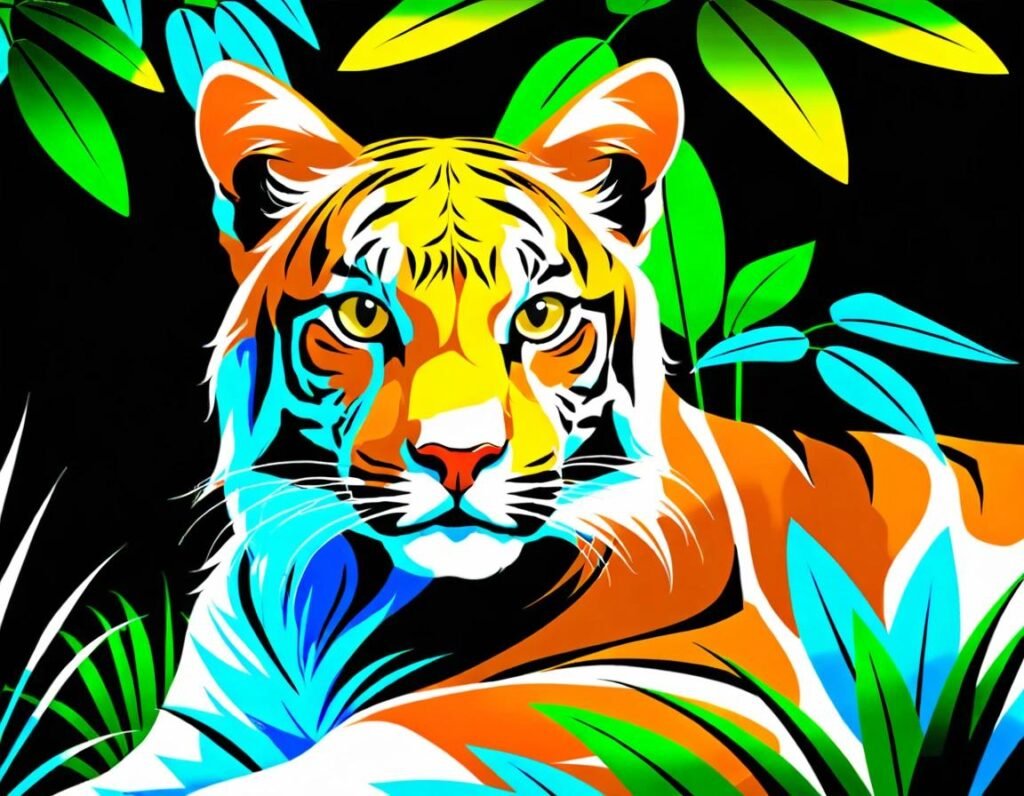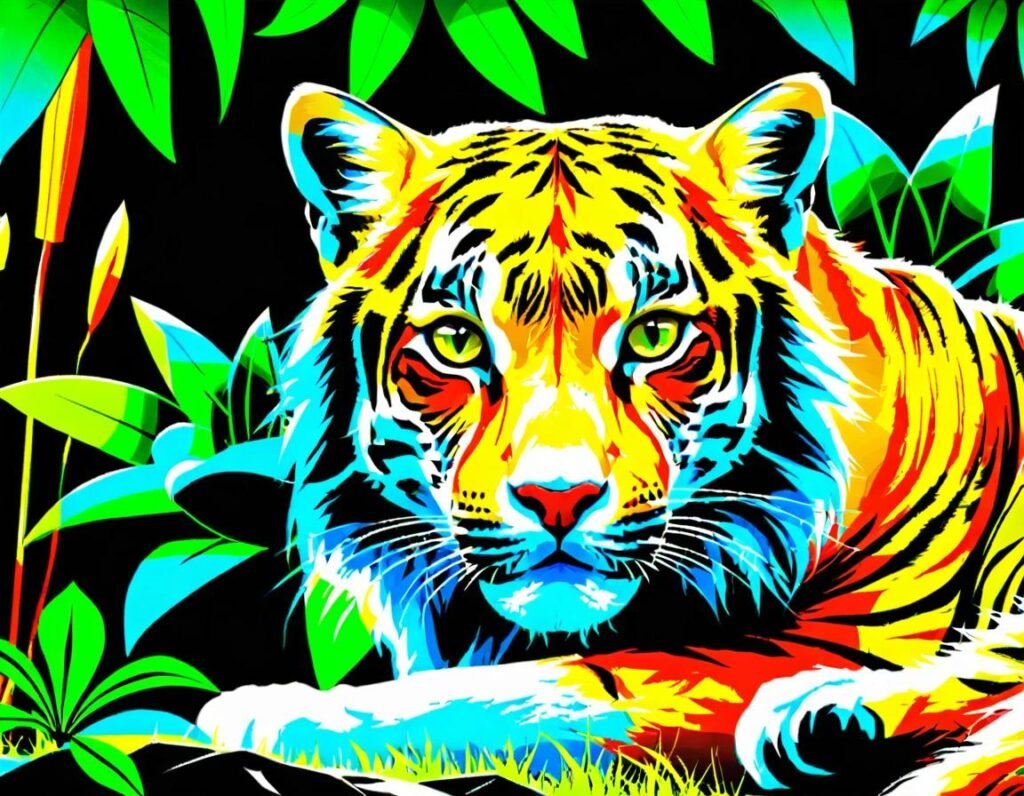
Wild Cats: Majestic, Mysterious, and Magnificent
When you think of wild cats, the first image that probably pops into your mind is that of a fierce lion basking under the African sun or a stealthy tiger prowling through a dense jungle. These magnificent creatures are as wild as they come—and boy, are they impressive! But wild cats are more than just cool big cats; they play a vital role in our ecosystems and are critical to the health of their habitats. So, let’s take a walk on the wild side and learn a bit more about these fascinating felines, from the jungle to the savannah and beyond.
What Are Wild Cats?
Wild cats are exactly what they sound like: cats that live in the wild. Unlike domestic cats (who are often seen curled up on a comfy sofa), wild cats are untamed and usually live in natural environments. There are over 40 species of wild cats in the world, ranging from the tiny and elusive black-footed cat to the mighty tiger and the regal lion. These animals aren’t just big and powerful, they’re also incredibly skilled hunters with instincts that make them the top predators in their habitats.
Some of the most famous wild cats include:
- Lions – The “king of the jungle,” though they prefer the savannah.
- Tigers – Known for their striking stripes and massive size.
- Leopards – Elegant, spotted cats known for their strength and agility.
- Cheetahs – The fastest animals on land—look out, Usain Bolt!
- Jaguars – Big, strong, and with a love for water.
Where Do Wild Cats Live?
Wild cats live in some of the most diverse environments on Earth. From the tropical rainforests of Southeast Asia to the savannas of Africa, wild cats are incredibly adaptable. Some species prefer mountainous regions, others thrive in grasslands, and a few, like the fishing cat, are fond of wetland habitats.
For example:
- Lions roam the grasslands of Africa, where they hunt in prides.
- Tigers are often found in the forests of Asia, sometimes even near rivers.
- Leopards are found in both forests and savannas, known for their ability to live in almost any environment.
- Cheetahs love open grasslands where they can run full speed.
- Jaguars prefer the dense jungles and rainforests of Central and South America.
Why Are Wild Cats Important?
Wild cats aren’t just big, beautiful creatures. They play a crucial role in maintaining the health of ecosystems. As apex predators, they help control populations of other animals, keeping prey species from becoming too numerous. This balance helps protect the environment from overgrazing and other issues that could arise if those populations got out of control. Simply put, wild cats are the unsung heroes of nature.
Additionally, wild cats are often seen as indicators of a healthy ecosystem. If a habitat is too degraded or polluted, wild cats won’t be able to survive. So, when we protect them, we’re also protecting the entire ecosystem that they help sustain.
The Secret Life of Wild Cats
Wild cats are typically solitary and elusive creatures. They prefer to stay hidden in the shadows, hunting at night (or in the early morning). Unlike our cuddly domestic cats, they aren’t typically looking for attention or belly rubs. In fact, trying to pet a tiger is a terrible idea—it’s not exactly a cuddly kitten!
These cats use their incredible senses to hunt and survive. Their sharp eyesight helps them spot prey from far away, their keen sense of smell alerts them to danger, and their superior hearing lets them hear the faintest rustle in the bushes. It’s no wonder that they’ve been so successful for millions of years!
Fun Fact:
Ever wonder why tigers have those awesome stripes? They’re not just for decoration! A tiger’s stripes actually help it blend into its environment, making it harder for prey to spot them in the tall grass. Talk about natural camouflage!
The Conservation Challenge: Why Are Wild Cats in Danger?
While wild cats are some of the most impressive creatures on the planet, many of them are facing serious threats. Habitat loss, poaching, and human-wildlife conflict are all taking a toll on their populations. Some species, like the Amur leopard and Sumatran tiger, are critically endangered.
- Habitat loss: As human populations grow, wild habitats are being destroyed or fragmented, making it difficult for wild cats to find the space they need.
- Poaching: Wild cats are hunted for their fur, bones, and other body parts, which are sold illegally on the black market.
- Human-wildlife conflict: As humans encroach on wild spaces, encounters between people and big cats become more common, sometimes leading to deadly conflicts.
Efforts are being made to protect these magnificent animals. Conservation programs, anti-poaching efforts, and habitat restoration projects are all part of the fight to save wild cats and the ecosystems they inhabit.

How Can We Help Protect Wild Cats?
If you’re passionate about wild cats, there are several ways you can get involved:
- Support wildlife conservation organizations that are dedicated to protecting wild cats, such as the World Wildlife Fund (WWF), Big Cat Rescue, and Panthera.
- Educate yourself and others about the importance of wild cats and why they need our protection. The more people know, the more we can do to protect them.
- Donate to causes that protect big cats, either financially or by supporting projects that restore wild habitats or combat poaching.
- Advocate for better laws that regulate hunting and protect natural habitats.
- Reduce your carbon footprint to help reduce the effects of climate change, which is impacting wild cat habitats.
Fun Facts About Wild Cats
- Cheetahs are the fastest land animals, capable of reaching speeds of 60 to 70 mph in short bursts. That’s faster than a car on the highway!
- Lions are the only wild cats that live in groups, known as prides. Meanwhile, most wild cats prefer to live solo.
- The fishing cat is a unique wild cat that loves to swim and is often found near wetlands, hunting for fish. Talk about an aquatic adventurer!
- The black-footed cat is one of the smallest wild cats, but don’t let its size fool you—this little predator is a serious hunter!
The Future of Wild Cats: Hope on the Horizon
While it’s true that wild cats face significant challenges, there is still hope for these magnificent animals. Thanks to conservation efforts, wildlife sanctuaries, and global awareness campaigns, we are starting to see positive changes. Many organizations are working tirelessly to protect habitats, enforce stricter anti-poaching laws, and raise funds to support the preservation of these incredible creatures.
Efforts to reintroduce endangered species like the Amur leopard and Siberian tiger into protected areas are showing promise. These programs focus on creating safe, secure environments where these cats can thrive without the threat of poaching or habitat destruction. Additionally, community-based conservation projects are helping to involve local populations in protecting wild cats and ensuring that people live in harmony with wildlife.
What You Can Do to Help Wild Cats
If you’re reading this and thinking, “How can I help?”—don’t worry, you’re not alone! There are plenty of ways for you to make a difference in the lives of wild cats:
- Support Conservation Organizations: Donate to organizations that are dedicated to protecting wild cats, such as WWF, Panthera, and Big Cat Rescue. These organizations work directly to protect the species, raise awareness, and advocate for better conservation policies.
- Spread Awareness: Share what you’ve learned about wild cats with friends and family. The more people know about the challenges faced by these animals, the more likely they are to take action. Social media is a great tool for spreading the word and raising awareness.
- Volunteer or Intern: If you’re passionate about wild cats and conservation, consider volunteering with organizations that focus on wildlife protection. Many sanctuaries and reserves offer opportunities to help care for animals or assist with educational programs.
- Make Responsible Choices: Avoid purchasing products made from wildlife or their habitats, such as tiger fur or illegal exotic pet products. Supporting ethical, wildlife-friendly products helps reduce the demand for wildlife exploitation.
- Educate Yourself: Understanding the complexities of wildlife conservation is essential. Learn more about the specific needs of wild cats, the ecosystems they inhabit, and the challenges they face. The more you know, the more informed your actions will be.
- Support Legislation: Advocate for stricter laws and regulations that protect wild cats from illegal hunting and poaching. Contact your local representatives to show your support for policies that prioritize the preservation of wildlife and natural habitats.
Conclusion: Why Wild Cats Matter
Wild cats are more than just fascinating creatures—they’re essential to the health of the ecosystems they inhabit and the planet as a whole. As apex predators, they maintain the balance of nature by controlling prey populations and supporting biodiversity. But they are also symbols of the wild places left on Earth, and losing them would mean losing something truly irreplaceable.
It’s up to all of us to ensure that wild cats continue to roam free for generations to come. Whether you’re donating, volunteering, or simply raising awareness, every little bit helps. Wild cats may be elusive, mysterious, and tough, but they need our help to secure a future where they can thrive. Let’s stand up for the majestic lions, tigers, leopards, and all the wild cats that roam our planet. After all, it’s their world—we’re just lucky to share it with them.
FAQs About Wild Cats
Q: What are wild cats?
Answer: Wild cats are feline species that live and thrive in their natural environments, rather than being domesticated. These cats include big cats like lions, tigers, and leopards, as well as smaller species like cheetahs, bobcats, and caracals. Unlike domestic cats, wild cats are wild by nature, living in forests, savannas, jungles, and other wilderness areas, relying on their instincts and skills to survive.
Q: What is the difference between wild cats and domestic cats?
Answer: The main difference between wild cats and domestic cats is their environment and behavior. Wild cats live in the wild and exhibit natural hunting and survival instincts. They are typically solitary and territorial. Domestic cats, on the other hand, have been domesticated over thousands of years and are adapted to live with humans in homes, relying on us for food and care. While both share the same ancestors, wild cats are much larger, more powerful, and less social than your average house cat!
Q: Why are wild cats important?
Answer: Wild cats are crucial for the health of their ecosystems. As apex predators, they help regulate prey populations, preventing overgrazing and maintaining the balance of species in their habitats. By controlling the populations of other animals, wild cats indirectly support biodiversity and the overall health of their environment. Protecting them means protecting entire ecosystems.
Q: How many species of wild cats are there?
Answer: There are over 40 species of wild cats spread across the globe. These range from large cats like lions, tigers, and leopards to smaller species like wildcats, caracals, and jaguars. While some, like the lion and tiger, are well-known, others, such as the black-footed cat, are less famous but equally fascinating.
Q: Where do wild cats live?
Answer: Wild cats inhabit a variety of environments, including forests, savannas, grasslands, mountains, and deserts. Some cats, like the tiger, are found in dense forests, while others, like the cheetah, prefer open grasslands for speed. There are even wild cats like the fishing cat that live near wetlands and rivers. In short, wild cats are incredibly adaptable and can survive in a range of habitats across the globe.
Q: Are wild cats endangered?
Answer: Yes, several species of wild cats are endangered or critically endangered due to threats such as habitat loss, poaching, and human-wildlife conflict. Some of the most vulnerable species include the Amur leopard, Siberian tiger, and cheetah. Conservation efforts are underway to protect these cats, but the threats they face are still significant.
Q: Why are wild cats being hunted?
Answer: Wild cats are hunted for various reasons, including their fur, bones, and other body parts, which are often sold on the black market. They’re also hunted as trophies or because of human-wildlife conflict, especially when they prey on livestock. Illegal hunting, also known as poaching, is one of the primary factors contributing to the decline of many wild cat species.
Q: How can we help protect wild cats?
Answer: There are many ways you can help protect wild cats:
- Donate to conservation organizations like WWF or Panthera.
- Spread awareness about the importance of protecting wild cats.
- Support laws that help prevent poaching and protect wildlife habitats.
- Choose sustainable products that don’t harm wildlife or their habitats.
- Volunteer with organizations focused on wild cat conservation efforts.
Educate others about the threats wild cats face and the importance of their role in ecosystems.
Q: Are wild cats social animals?
Answer: Most wild cats are solitary animals. For example, tigers, leopards, and cheetahs prefer to live alone and establish their own territories. However, there are exceptions. Lions are social cats that live in prides, which are family groups made up of related females, their cubs, and a few males. Even within prides, the structure and dynamics are quite different from the lone lifestyles of other big cats.
Q: Can wild cats be domesticated?
Answer: No, wild cats cannot be domesticated in the same way that house cats can. While some have been kept in captivity or even as exotic pets, this is not the same as domestication. Wild cats have natural instincts that make them unsuitable as pets, and they are not accustomed to living in human homes. They require vast amounts of space, stimulation, and a specific diet, making them better suited for wild habitats or wildlife sanctuaries.
Q: What is the role of wild cats in conservation?
Answer: Wild cats play a critical role in conservation because they are keystone species. As apex predators, they regulate the populations of other animals, which helps maintain the balance of the ecosystem. When wild cats thrive, it’s often a sign that the ecosystem is healthy. Conversely, when their numbers decline, it indicates broader environmental issues that need attention. Protecting wild cats is therefore key to maintaining biodiversity and the health of natural ecosystems.
Q: Do wild cats hunt at night?
Answer: Yes, most wild cats are nocturnal or crepuscular, meaning they hunt during the night or at dawn and dusk. This behavior helps them avoid the heat of the day and makes use of their superior night vision to stalk prey. Cheetahs, for example, may also hunt during the day, especially in cooler climates, but other big cats like tigers prefer the cover of darkness.
Q: Can I see wild cats in the wild?
Answer: Seeing wild cats in the wild is rare and often difficult, especially if you’re trying to spot them in their natural habitat. Many wild cats are elusive and solitary, making them hard to find. However, some protected areas and wildlife reserves offer the chance to see wild cats like lions, tigers, or leopards in their natural environment, though encounters are typically distant and carefully managed by experts to ensure the safety of both the animals and visitors.
By understanding wild cats and the challenges they face, we can take steps to protect them and ensure they continue to roam the wild for generations to come. Wild cats aren’t just powerful predators—they’re an essential part of the web of life that keeps ecosystems balanced. Let’s all do our part to safeguard their future!


